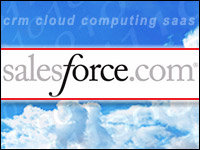
How can companies establish effective customer relationship management in the heat of battle? We’re not talking about a military action; the conflict in this case exists between entertainment companies and their customers.
“For the most part, the entertainment industry and its customers have been at war,” Rob Enderle, principal analyst at Enderle Group, told CRM Buyer, “and it’s been watching sales drop as a result.”
Companies vs. Customers
Media companies often position their customers as criminals, assuming they are trying to pirate music, movies and other broadcasts, said Enderle. Under those circumstances, it’s very difficult to establish effective relationships that garner companies bigger slices of their customers’ discretionary incomes.
However, they must establish those relationships to win back customers in a world where revenue from traditional show-business products — feature films, big-label records and concerts — is shrinking. They must do it in a software world where two divergent trends dominate the competitive landscape: verticalization and simplification.
Vertical vs. Simple
The metatrend of CRM software is toward simplification, William Band, principal analyst at Forrester Research, told CRM Buyer. Companies — especially large ones like media conglomerates — are looking to lower training and software management costs. Thus, they are trending toward large enterprise softwareapplications likeOracle’s Siebel and SAP.
Those larger solutions increasingly offer vertical functionality for the media industry. Microsoft and Oracle, for example, now offer features specifically designed for media companies.
Those features, though, tend to address back-office pain points more than front-office ones, Sheryl Kingstone, director of enterprise research at Yankee Group, told CRM Buyer. Negotiating contracts and handling content distribution are two areas where such vertical modules offered by enterprise suite makers are helpful. SAP, she noted, is handling those processes particularly well. Such deals might involve making television broadcasts available through mobile phone networks.
Addressing specific concerns of consumers remains an area mostly ignored. In many cases, large media companies do not know how customers of one area of the company — say, a parent and child using the new features of the redesigned Disney.com — are using media content from another — for example, a sports fan watching any of the offerings of the several ESPN channels.
Sales and Marketing vs. the Back Office
Providing software that supports the sales and marketing groups at large media companies remains the domain of value-added resellers or specialty consultants, said Kingstone. These groups are more concerned about issues like pricing packages of services and content, or establishing more thorough knowledge of the market through business intelligence and analytics tools.
Those analytics might lead to a wholesale revision of business models, not just better tracking of numbers, said Enderle. EMI’s recent push toward distributing music without digital rights management encryption is one example, he noted. Selling music to customers becomes a much easier proposition for marketers when those customers feel they can do what they want with the music they purchase. That freedom also makes customers feel less motivated to find ways around dealing with the company altogether, like purchasing or copying a pirated version of a movie.
Suite vs. Stand-Alone
Media businesses are at the same crossroads that companies in many other industries have encountered, said Band. The decision remains whether or not to go with the CRM and associated industry vertical modules offered by the company’s primary enterprise software vendor or to purchase a stand-alone CRM suite. In this, the entertainment industry has much in common with sectors such as wealth management and real estate development, where specialized CRM applications flourish. These are such complex customer relationships that they offer room for stand-alone CRM packages, he noted.
A European company,Update, is gaining traction in providing those specialized CRM installations, said Kingstone. Such customized packages can do well in supporting the particular business processes used by those trying to get a handle on how many interaction points a customer has with an entertainment company, and how to leverage the customer relationship as a whole.
Entertainment ventures, because they are very large companies doing business with other very large companies, often have large enterprise packages already in place and remain loath to complicate their IT environments. Such companies may do well to add customized functionality on top of their larger enterprise suites, she noted.
Tacking on needed business processes would support deals involving, say, a movie studio selling content to a cellular phone provider. Add-on customized functionality could bring the tools needed to also address the needs of the provider’s customers. Several vendors are offering such add-ons for Sage Software’s SalesLogix, she noted.
Still, there is much work to be done to address the customer experience when consuming media products, commented Kingstone.
“If we could have better insight into what customers want in the way of content,” she proposed, “think about how much more wallet share a company could grab. It’s all about understanding what the customer wants, how a network can provide it, and how a business can sell it.”





















































